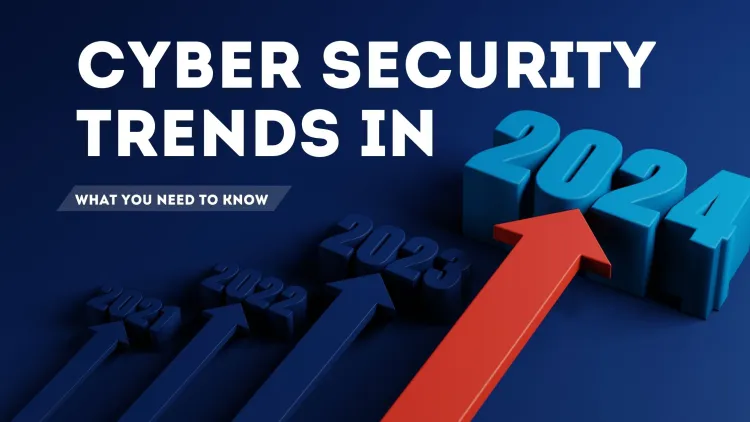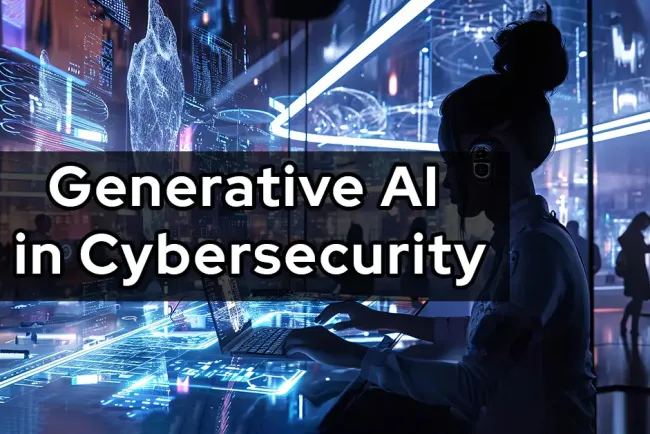Cybersecurity Trends in 2025: What You Need to Know
In 2025, cybersecurity continues to evolve in response to increasingly sophisticated cyber threats. Key trends to watch include the growing role of AI and Machine Learning in enhancing threat detection and response, the rise of Ransomware 2.0 with double extortion tactics, and the widespread adoption of Zero Trust architecture to ensure secure network access. Remote and hybrid work environments will drive the need for enhanced security measures like multi-factor authentication and cloud security. Other trends include focusing on supply chain security, adopting Privacy-Enhancing Technologies (PETs), and leveraging automation to address the cybersecurity skills shortage. Additionally, biometric authentication is becoming more common for secure identity verification, and businesses are increasingly investing in cybersecurity insurance to mitigate the financial risks of cyberattacks. Staying ahead of these trends will be essential for businesses to protect their digital assets in the face

In the fast-paced digital world, cybersecurity has become more crucial than ever before. As technology continues to evolve, so do the methods used by cybercriminals to exploit vulnerabilities. In 2025, businesses, governments, and individuals must be more vigilant in securing their digital infrastructure. In this blog, we’ll explore the top cybersecurity trends that will dominate 2025 and how organizations can prepare for the new era of cyber threats.
1. AI and Machine Learning in Cybersecurity
Artificial Intelligence (AI) and Machine Learning (ML) have already begun transforming the cybersecurity landscape, and in 2025, their role will become even more prominent. These technologies enable advanced threat detection, faster response times, and automated security processes. AI-powered systems can analyze large volumes of data to identify potential threats in real time, helping to protect against emerging cyberattacks like zero-day vulnerabilities.
Machine learning algorithms will also continue to improve, allowing them to predict and mitigate threats before they cause significant harm. As cybercriminals become more sophisticated, AI and ML will play an integral role in enhancing cybersecurity defenses.
2. Rise of Ransomware 2.0
Ransomware attacks have been on the rise for several years, but in 2025, they are expected to evolve into a more sophisticated and damaging threat—Ransomware 2.0. Unlike traditional ransomware attacks that simply encrypt data and demand payment, Ransomware 2.0 attacks will include double extortion tactics, where attackers not only encrypt data but also steal it, threatening to release sensitive information unless the ransom is paid.
In addition, these attacks are likely to become more targeted, with cybercriminals focusing on high-value organizations, such as healthcare, finance, and government sectors. Businesses must prioritize data backups, implement strong endpoint protection, and educate employees to recognize phishing attempts to safeguard against these advanced ransomware threats.
3. Zero Trust Architecture
Zero Trust (ZT) architecture is gaining momentum as organizations strive to strengthen their network security. The Zero Trust model operates on the principle of “never trust, always verify,” meaning that every user, device, and application is considered a potential threat until proven otherwise.
In 2025, more companies will adopt Zero Trust strategies to safeguard their digital assets. This approach requires robust identity and access management (IAM) solutions, continuous monitoring, and micro-segmentation of networks to limit lateral movement by attackers. Zero Trust will be particularly valuable as remote and hybrid workforces continue to increase the attack surface.
4. Cybersecurity for Remote Work and Hybrid Environments
The shift to remote work and hybrid environments, accelerated by the pandemic, has changed the way organizations approach cybersecurity. As 2025 progresses, securing remote workforces will remain a priority. This includes implementing secure Virtual Private Networks (VPNs), strong multi-factor authentication (MFA), and endpoint security tools for remote devices.
Furthermore, companies will need to ensure that collaboration tools and cloud services are secured, as they are frequently targeted by attackers looking to exploit weaknesses in these platforms. Secure access management and the use of cloud security platforms will be essential to protect employees working from diverse locations.
5. Cloud Security and Compliance
Cloud adoption continues to rise as organizations move their operations to the cloud for scalability and cost-efficiency. However, with the increased reliance on cloud services comes the need for better cloud security practices. In 2025, cloud security will be a top priority for organizations looking to protect sensitive data from breaches and ensure compliance with various regulations like GDPR, HIPAA, and PCI-DSS.
Key areas of focus will include encryption of data in transit and at rest, securing APIs, and managing access controls to prevent unauthorized access. Organizations will also need to ensure that they understand the shared responsibility model between themselves and their cloud service providers.
6. Increased Focus on Supply Chain Security
Supply chain attacks have been on the rise, and this trend will continue in 2025. Cybercriminals are increasingly targeting third-party vendors and service providers to gain access to their clients' systems. High-profile incidents like the SolarWinds attack in 2020 have highlighted the vulnerabilities in supply chain ecosystems.
In 2025, businesses will need to strengthen their third-party risk management practices, conduct thorough security audits of their vendors, and implement stricter contractual obligations regarding cybersecurity. Ensuring that supply chain partners adhere to the same cybersecurity standards will be crucial for mitigating these risks.
7. Privacy-Enhancing Technologies (PETs)
With data privacy regulations becoming more stringent globally, organizations will increasingly adopt Privacy-Enhancing Technologies (PETs) in 2025 to protect personal and sensitive data. These technologies help businesses anonymize or pseudonymize data, ensuring that even if it is exposed in a breach, it cannot be traced back to individuals.
PETs, such as homomorphic encryption, will enable organizations to process sensitive data securely without compromising privacy. In an era where data breaches are frequent, using these advanced technologies will be essential to building consumer trust and ensuring compliance with privacy laws.
8. Cybersecurity Skills Shortage and Automation
The demand for cybersecurity professionals continues to outstrip supply, leading to a significant skills shortage in the industry. In 2025, organizations will increasingly turn to automation and AI-powered tools to fill the gap and enhance their cybersecurity posture. Automated threat detection, response, and patch management will become more common, reducing the burden on overworked security teams.
To address the skills shortage, organizations will also invest in training programs and certifications for existing employees to upskill them in cybersecurity. This will help create a more resilient cybersecurity workforce capable of handling evolving threats.
9. Biometric Authentication
As traditional password-based authentication systems become more vulnerable to attacks, biometric authentication is expected to become more widely adopted in 2025. Biometrics, such as fingerprint scans, facial recognition, and voice authentication, offer a more secure way to verify identities and prevent unauthorized access to systems.
Incorporating biometric authentication into multi-factor authentication (MFA) protocols will enhance security across organizations, particularly in high-risk sectors like banking and healthcare.
10. Cybersecurity Insurance
As cyber threats continue to escalate, businesses are increasingly turning to cybersecurity insurance to mitigate financial losses caused by breaches. In 2025, the demand for cybersecurity insurance will grow, with policies covering ransomware attacks, data breaches, and business interruption. However, insurers will be more selective in the types of businesses they insure, requiring organizations to demonstrate robust cybersecurity practices before offering coverage.
Insurance providers will also focus on offering policies that are tailored to specific industries, ensuring that coverage addresses the unique risks associated with different sectors.
Conclusion
As cyber threats continue to evolve, organizations must stay ahead of the curve to protect their digital assets. The cybersecurity trends of 2025, including the rise of AI, Ransomware 2.0, Zero Trust Architecture, and cloud security, highlight the need for proactive and robust security strategies. By embracing new technologies, improving security practices, and staying informed about emerging threats, businesses can better safeguard themselves against the ever-growing landscape of cybercrime.
The future of cybersecurity is dynamic, and it’s essential for organizations to remain agile and prepared to face new challenges in the years to come.
FAQ:
1. What is the importance of AI in cybersecurity?
AI in cybersecurity is crucial because it helps detect and mitigate cyber threats faster than traditional methods. AI-powered systems can analyze large amounts of data to identify suspicious patterns, predict potential threats, and automate security processes, improving overall defense.
2. What is Ransomware 2.0?
Ransomware 2.0 refers to a more sophisticated form of ransomware attacks. Unlike traditional ransomware that simply encrypts data, Ransomware 2.0 involves double extortion, where attackers steal data and threaten to release it unless the ransom is paid.
3. Why is Zero Trust architecture becoming popular?
Zero Trust architecture is gaining traction because it operates on the principle of "never trust, always verify." It ensures that every user, device, and application is constantly monitored and authenticated, reducing the risk of internal and external threats, especially in remote and hybrid environments.
4. How can businesses secure remote work environments?
Businesses can secure remote work environments by using VPNs, multi-factor authentication (MFA), endpoint security tools, and ensuring that collaboration tools and cloud services are secured. Strong access control measures and secure data transmission are also essential.
5. What is cloud security, and why is it important?
Cloud security involves securing data, applications, and services hosted in the cloud. It is important because with the increasing adoption of cloud services, businesses need to ensure that sensitive data is protected from unauthorized access, breaches, and compliance violations.
6. How can organizations protect against supply chain attacks?
Organizations can protect against supply chain attacks by strengthening their third-party risk management practices, conducting security audits of vendors, and ensuring that supply chain partners adhere to the same cybersecurity standards.
7. What are Privacy-Enhancing Technologies (PETs)?
Privacy-Enhancing Technologies (PETs) are tools and techniques that help organizations protect personal and sensitive data by anonymizing or pseudonymizing it. These technologies, such as homomorphic encryption, ensure that even if data is exposed, it cannot be traced back to individuals.
8. How will automation help address the cybersecurity skills shortage?
Automation will help fill the gap caused by the cybersecurity skills shortage by reducing the need for manual intervention in tasks like threat detection, response, and patch management. This will allow security teams to focus on more complex issues and improve overall efficiency.
9. What is biometric authentication, and how does it enhance security?
Biometric authentication uses physical characteristics like fingerprints, facial recognition, or voice recognition to verify identities. It enhances security by making it more difficult for attackers to spoof or bypass authentication, especially when used in multi-factor authentication (MFA).
10. Why is cybersecurity insurance becoming more important?
As cyber threats increase, cybersecurity insurance helps businesses mitigate financial losses caused by data breaches, ransomware attacks, or other cyber incidents. It is becoming more important as it offers coverage for recovery costs, legal fees, and business interruptions related to cyberattacks.












![Top 10 Ethical Hackers in the World [2025]](https://www.webasha.com/blog/uploads/images/202408/image_100x75_66c2f983c207b.webp)

![[2025] Top 100+ VAPT Interview Questions and Answers](https://www.webasha.com/blog/uploads/images/image_100x75_6512b1e4b64f7.jpg)









